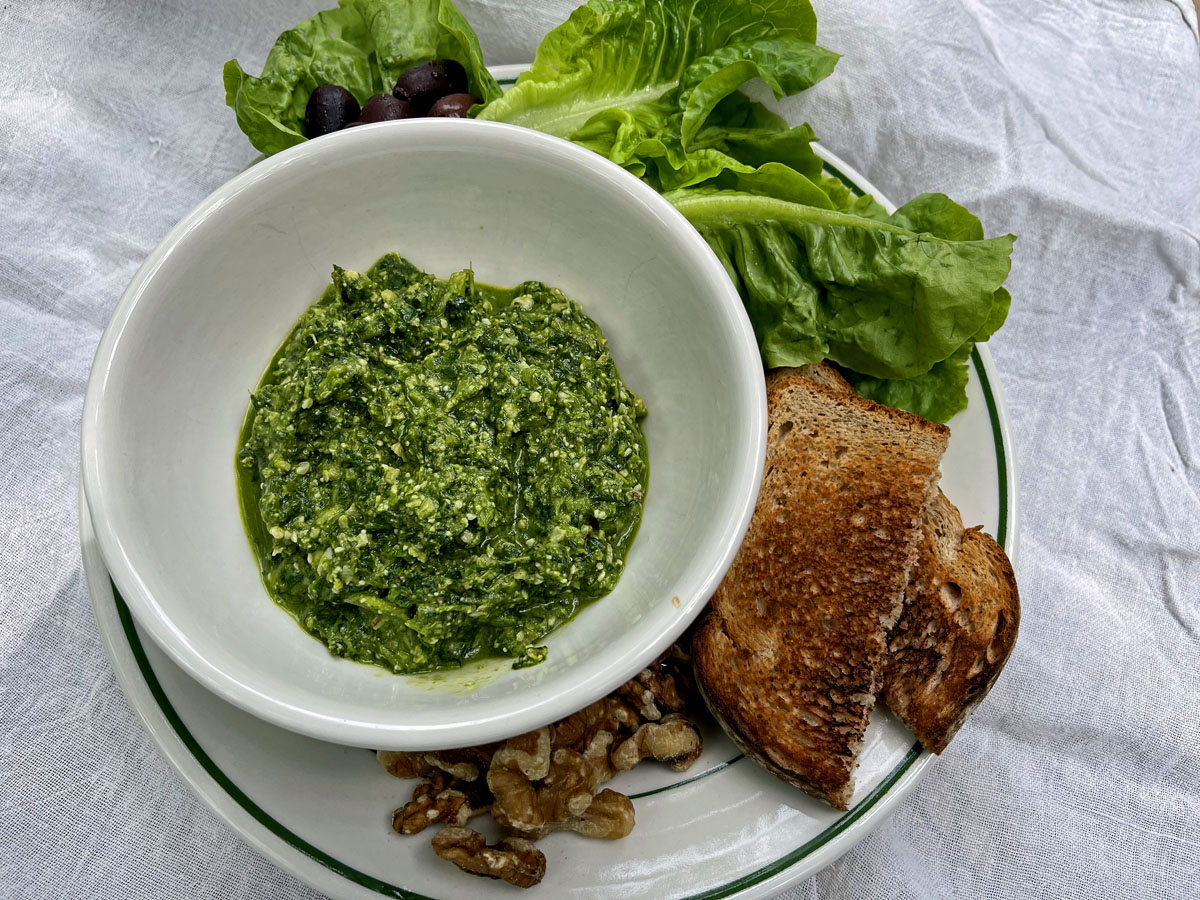
A friend who lives in the south of France asked me yesterday in email what plans I have for summer. I couldn’t think of a thing, other than trying not to hide too much indoors in a bug-free, air-conditioned house. Then I remembered one thing: That, with the riches I hope to get from the garden, I plan to work on my Italian cooking.
It was about ten days ago, upon observing that though the early garden was 90 percent a failure because of the cold, dry spring, the summer garden looks promising. I will have yellow squash next week. The cucumbers and tomatoes are blooming. The basil and onions are coming along, but slowly. I planted okra from seed today.
Like most Americans, I grew up with spaghetti. Every few years or so I’ve made lasagna at home. I put some effort into improving my pizza skills, especially with crusts. I’ve had a few incredibly good dinners at proper and properly Italian restaurants in North Beach in San Francisco. But I have never made an effort to concentrate on authentic Italian cooking. I realized that I needed a book for that.
Cookbooks are available from Italian cooks with current TV shows, but I wanted something classic. The classic work on Italian cooking for English-speaking cooks was easy to identify. It’s Italian Food, by Elizabeth David. It’s one of the most beautiful cookbooks I’ve ever seen, illustrated with excellent color prints of Italian paintings of food. The book was printed in Verona.
Italian Food. Elizabeth David. Barry & Jenkins, London, 1954, 1987, 1996. 240 pages.
First published in 1954, this book satisfies my curiosity about what any culture’s cuisine was like when the cooks had experience and memories that went back to the 1800’s. What I saw in my grandmother’s kitchen in the Yadkin Valley of North Carolina in 1954 (she was born in 1896) was nothing like what one sees in even the best kitchens today. New developments in cuisine, such as the ideas of an Alice Waters or a Michael Pollan, are very important. But cooking also has roots, and some knowledge of those roots is a must-have for any cuisine.
I ordered this cookbook through Amazon. It was shipped from the United Kingdom. There must be a good many copies in print, because the book is not hard to find. Booksellers don’t usually say what edition they’re selling. Mine is the 1996 edition, in very good condition.
I’ve a lot of good reading ahead of me, but the part about basil convinced me that this is indeed the cookbook I want:
“Nothing can replace the lovely flavour of this herb. If I had to choose just one plant from the whole herb garden I should be content with basil. Norman Douglas, who had a great fondness for this herb, would never allow his cook to chop the leaves or even to cut them with scissors; they had to be gently torn up, he said, or the flavour would be spoilt. I never agreed with him on this point, for the pounding of basil seems, on the contrary, to bring out its flavour.”
By pounding, I assume she means pounding in a mortar and pestle, which is now the only method I will use for making pesto.
Italian cooks, she writes in 1954, go to market twice a day. That’s a beautiful idea, but no American can live that way anymore. Some of us can, however, go to the garden twice a day.
Elizabeth David, who died in 1992, is an important figure in the history of cooking and cookbooks. The Wikipedia article is a good starting place for information about her.

Click here for high-resolution version

Lettuce pesto with lettuce from my garden
Pesto from lettuce?
Lettuce pesto sounds bland and watery. In truth, it is a little bland and a touch watery. But if lettuce is what you’ve got, then lettuce pesto it is. It will be three weeks or so before I can expect any summer basil from the garden. The winter basil from the kitchen window is almost gone, but I had enough of it to season the lettuce a bit.
